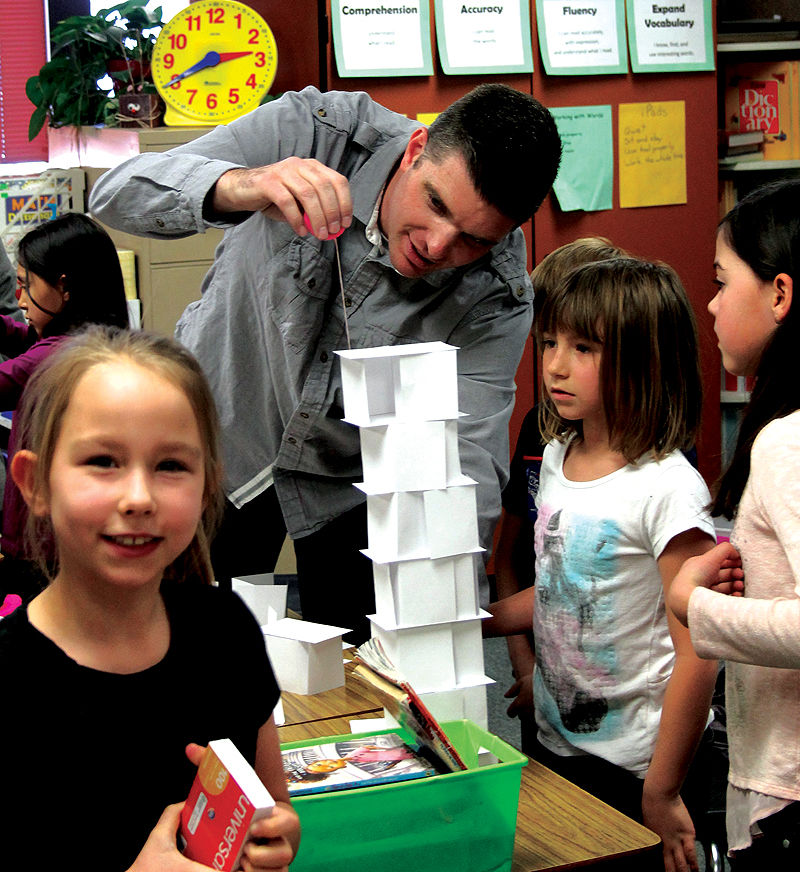A company called US Synthetic visited Price Jan. 24-25 and spent time drilling down into students heads at Creekview Elementary.
Well, not literally.
US Synthetic is 30-year industry veteran and a leader in the development and production of polycrystalline diamond cutters (PDCs) for oil and gas exploration. The company employs about 830 people in Utah county and has a division called “Engineering Good.” That group led activities at the school.
What could a company that makes drill bits bring to students who are barely learning how to add and divide? \
The answer is problem solving. US Synthetic was getting into kids’ heads about learning to think and solve problems they may face in any number of different ways. They brought along six specialists for two days to work with the students.
“At US Synthetic we have a culture of problem solving,” said Joe Weight, one of the trainers for the day and a raw materials quality analyst. “We went through a lean manufacturing transformation not long ago and we found the best way to do that is to enable our own people to solve their own problems.”
The presentations made to students included a scenario the company faced every day. Workers were getting their fingers burned by not knowing when parts that came out of the manufacturing process cooled down. Weight said the firm had engineers determining when those could be safely handled.
“They wanted to look at using thermal imaging cameras and all kinds of stuff,” he said. “And there were 14 of those machines that would have had to have been fitted with those measures. An employee came up with a suggestion on how to handle it for $5 per machine.”
A video showed to students demonstrated the problem and showed how a simple piece of paper could be hung above the parts as they came off the manufacturing line. The paper changed colors, depending on how hot the parts were.
The solution not only saved pain but saved money.
The trainers went into classrooms and began by working with students on building towers out of folded card stock. They gave the students a time limit and then measured who had the tallest tower that stood up to a small weight put on top of it.
Then they worked with students on what the best way to build the towers would be if they had known what they learned the first time. They talked about the structures they built being made more stout so the project could support more weight. As students proceeded, towers got taller and stronger and students adjusted their designs based on previous failures.
After a short video from a movie about problem solving,, the instructors had them go build the structures a third time. One of the things they were taught was to test the strength of the towers at each level, because, in the end, the strength of the structure is what creates the best towers.
Landon Garner, Engineering Good’s director, said young people often do better than adults, even people who are highly educated and driven, at building towers.
“Adults are always in a hurry to get them built and build the highest one,” he said as he instructed a class. “You follow instructions and test as you go.”
Creekview students get lesson in problem solving

Alex Crabtree, Kaeda Wheeler, and Malia Cilli stand by while Landon Garner measures their towers on the second phase of the project.
